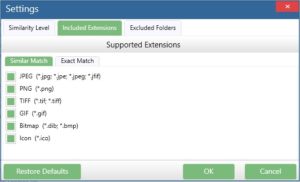If you are a media professional like a photographer or a graphic designer, you might have come across the term lossless images. Even if you haven’t, I bet you have several lossless images stored in your computer without you being aware of it.
What Are Lossless Image Formats?
The term lossless refers to a way of compression of images such that the original data can be reconstructed, whenever required. It might come as a surprise to you but common image types such as PNG and GIF also use lossless compression and are all examples of lossless image formats.
Why Are Lossless Images Needed?
As obvious, large file sizes occupy loads of storage space and disrupt a computer’s performance. Speaking of the web, large files slow down websites, ruin the user experience, and heavily decrease the Search Engine Optimization ranking on web search engines.
Lossless images, which are compressed files help overcome such speed and performance issues.
Duplicate Lossless File Formats
While it’s quite a wise idea to compress files into lossless formats, the compression process often leads to the generation of a bunch of duplicate files. After all, what’s the use of compressing your files if their duplicates are still going to eat up your storage space?
It is always recommended that if you want better speed and optimized performance, you should get rid of duplicate files. However, manually browsing through all the files, classifying the duplicates and then removing them sounds like a very boring and time-consuming task.
Remove Duplicate Lossless Files
Luckily, there are a few tools that can remove duplicate photos automatically. PictureEcho is one such tool that has managed to stand out among the crowd because of its accuracy and easy-to-navigate user interface.
PictureEcho is available for Windows-based computer systems only at the moment. It works perfectly fine with Windows 10/ 8/ 7 (32-bit and 64-bit) machines.
Step 1: Add the Scan Location Into PictureEcho
Click the Add Path button and browse through your computer to select and load the file paths that you wish to scan. PictureEcho also allows you to run a full-fledged scan where you can even exclude certain paths/folders via the Remove Path button.

Step 2: Duplicate Search Criteria
PictureEcho allows users to find exact matches as well as similar matches. If you know what type of lossless images you are dealing with, you can simply select from the given options or write the image extensions manually by going to the Similarity Settings and then the Included Extensions section.

Alternatively, if you are not sure about what kind of duplicate lossless photos reside in your computer, you can happily run a scan and see all types of duplicate photos hiding within your storage.
Step 3: Decide What You Want to Do With Duplicates
After the scan is over, PictureEcho will ask you to decide how you want to treat the detected duplicates. You can decide which versions of the image you want to keep and which ones you want to get rid of.
This decision could be quickly made by going to the Select Duplicates section. You could decide on the basis of several factors such as date of creation, file size, resolution, and even file location.
Once you have figured it out via the Select Action menu, you can now decide if you wish to instantly delete all the selected duplicates or you want to relocate them (if you think you might want to examine them in the future).
Well, that’s pretty much it! By following just these few steps, you can easily detect and remove duplicate images with lossless image formats. The whole process is over within a matter of just a few minutes. Totally worth it!